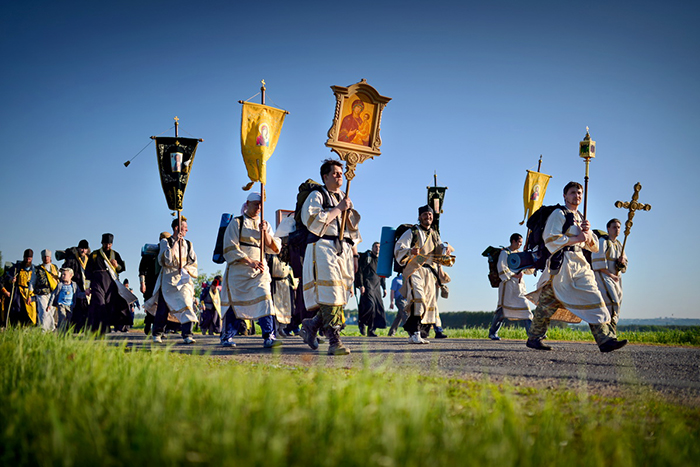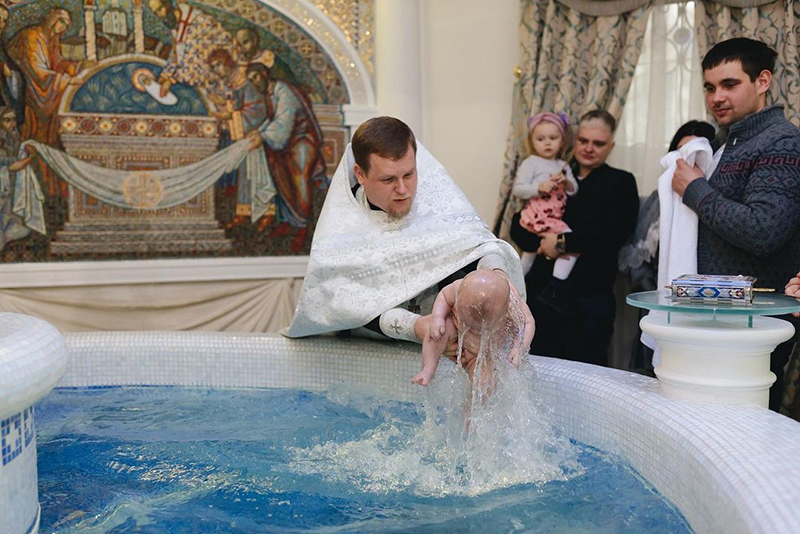
Whenever we face any public calamity, such as drought, or flood, or hail, which devastates our fields by God’s permission; or fires, or mudslides, or any other disaster; then we usually take up holy icons, crosses, and banners from the church, and march with them around our villages, farms, and gardens, and beseech the Lord for mercy. Do you know, brethren, where the practice of these processions in the time of distress came from, and who passed it on to us? If you do not know, I will tell you.
The practice of organizing religious processions came to us from Greece, from where we received the Orthodox Christian faith. This can be proved by the fact that religious processions during public disasters took place there since a very distant past. Thus, there was an earthquake in Constantinople when Emperor Theodosius the Younger died, which started on a Sunday and lasted intermittently for three months. At that time, the city walls fell, many houses were destroyed and many national monuments were ruined. The emperor, together with the people, made processions of the cross during these disastrous days and continuously exclaimed with tears, “Deliver us, O Lord, from your righteous wrath against our sin, for the sake of our repentance. Thou hast moved the earth and shattered it because of our iniquities, so that we may glorify Thee, the only good and man-loving God” (Prologue Jan 26).
George Kedrenos, a church historian, mentions another religious procession in Constantinople during a calamity. He writes, “When there was a drought and it did not rain at all for six months; then the Emperor’s brothers held a procession in which John carried the holy cloth of the image of Christ Not Made by Hand, one of the nobles carried the epistle of Christ to Abgar, and the other the holy veils of Christ, while the patriarch and his retinue went from the great Chamber to the Blachernae Church of the Most Holy Mother of God, with the aim of holding the second procession. (The New Tablets, part IV, page 543). This is how, in distant past, processions of the cross were held, which undoubtedly served as an example, or a model, for our processions as well.
Now you know, brethren, where we got the beginning of our processions and where the practice emerged. The only thing that remains to be done is to give you an edifying message at the end of my speech. What shall I tell you? First, remember that religious processions are undertaken in order to sanctify both people and everything they need, i. e. their houses, roads, waters, air, and the earth itself, as it is trampled and defiled by sinners’ feet. This is so that the inhabited cities and villages, and the whole country, may partake of divine grace, and cast away all that is pernicious and harmful (Tablet 545). Secondly, do not forget that, in the event of public disasters, we must pray with special devotion for the mercy and goodness of the good and loving God to avert from us all His wrath that moves toward us, and to deliver us from His proper and righteous vengeance, and to have mercy on us His unworthy servants. Amen.
Translated by The Catalogue of Good Deeds
Source: https://azbyka.ru/otechnik/Viktor_Gurev/prolog-v-pouchenijah-na-kazhdyj-den-goda/186



